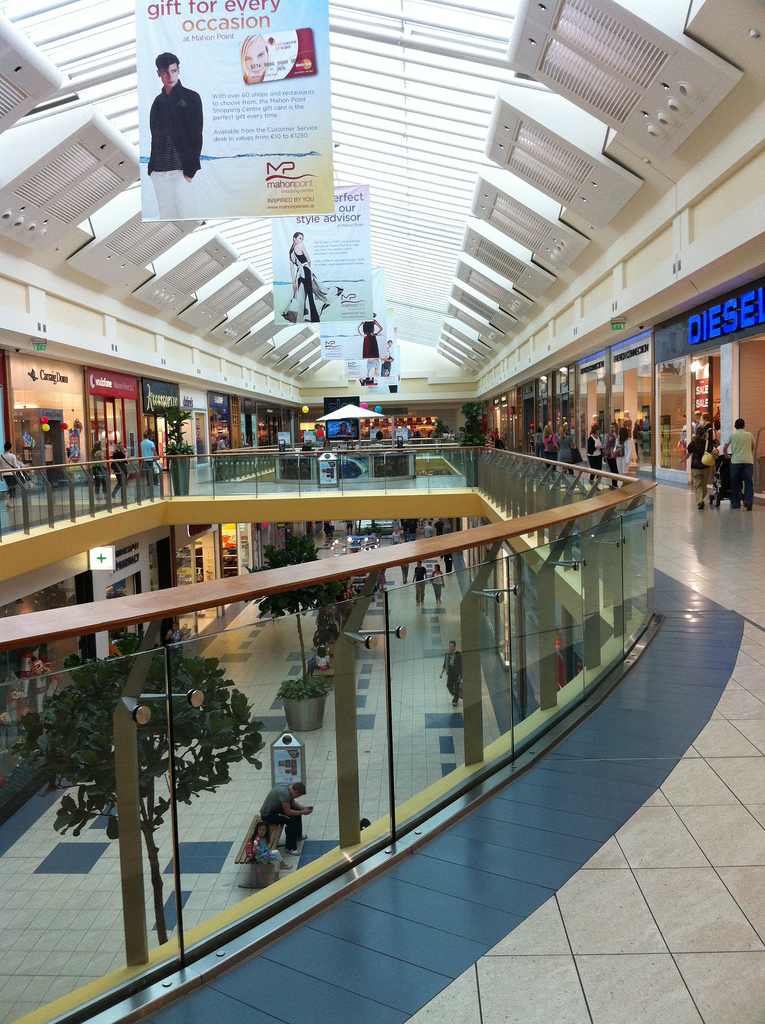Regional Trends Vary Widely, Says New Global Shopping Center Report
A new global shopping report from Cushman & Wakefield and the International Council of Shopping Centers shows that Asia and Latin America are driving the global shopping center revival.
By Scott Baltic, Contributing Editor
The world’s three major industrialized regions provide a study in contrasts, according to a new global retail report from Cushman & Wakefield and the International Council of Shopping Centers. Released yesterday at the 2012 ICSC Retail Real Estate World Summit in Shanghai, A Global Perspective on the Shopping Center Industry focuses on global retailers and macroeconomic and consumer trends affecting the global shopping center industry, as well as demand and rent trends for prime shopping centers within Asia/Pacific, Europe and the Americas.
Despite globalization’s central role in the shifts in the shopping center industry, divergent consumer behavior continues to shape the formats of shopping centers in major markets around the world.
ASIA/PACIFIC
Employment gains, rising incomes, urbanization and burgeoning populations, particularly in China, India and Southeast Asia, have enabled retailers to aggressively expand across the Asia/Pacific region.
The growing middle class in these markets, according to the report, “is quickly adopting a more modern and discerning shopping behavior, made possible by greater access to global brands.” Retail rents have been rising across the region, peaking in Central Hong Kong at more than $927 per square foot annually. (Hong Kong has not only a high volume of tourists from mainland China, but a shortage of prime shopping center space.)
Shanghai and Beijing, as well as Seoul’s premier shopping district, Myeong-dong, are also among the regions’ priciest retail markets.
In tandem with market growth, the gradual removal of trade barriers and the spread of market-oriented economic policies in Asia/Pacific are helping to drive structural changes in retail in China, India and South Korea.
Finally, top global retailers, especially clothing and footwear specialty stores, have been drawn to Asia by these promising trends. Further, more than a third of international retailers in major Asia/Pacific shopping centers cater to luxury shoppers. “Asia, and in particular China,” the report says, “has been the greatest engine for growth for major luxury retailers such as Burberry, Salvatore Ferragamo, and Louis Vuitton, which have vigorously expanded across the region.”
EUROPE
Despite the European debt crisis, the prime shopping center market in Europe remains stable, the report says, though it also notes significant within-region differences. While retail sales in the euro zone were down 1.2 percent year-over-year at mid-2012, retail sales in Germany and the United Kingdom were up 2.5 percent on an annual basis, while those in Spain and Italy — unsurprisingly — were down between 2 and 4 percent year-over-year.
A shortage of construction financing was a serious brake on new shopping center completions in 2011, which totaled only 69.8 million square feet. “Western Europe was particularly affected,” according to the report, “as evidenced by the lowest level of new shopping center supply delivered onto the German market in more than 20 years.” The flip side for Germany has been an average 4 percent rent increase year-over-year.
Currently more than of two-thirds of new development is occurring in Central and Eastern Europe, with Russia, Turkey and Poland all poised to see significant new supply, based on underlying economic expansion.
With limited new supply throughout much of Europe, the report says, many owners of prime shopping centers are focusing on asset management. Efforts include combining adjacent units to accommodate anchor tenant requirements, refurbishing dated schemes and updating the retailer mix to better reflect in-demand brands, whether these are international names or local favorites.
THE AMERICAS
As the U.S. economy continues to creep toward recovery, both high-end and discount-oriented centers are doing well, though retailers in the middle, including JC Penney and Best Buy, are struggling.
In Canada, vacancy rates are comparable to those in the United States, though new retail construction was low in 2011 at only 3.6 million square feet. This year should see more completions, however, almost 8.5 million square feet, mostly in Winnipeg, Edmonton and Vancouver.
But it’s Latin America that’s the Western Hemisphere’s brightest spot, the report says. Substantial growth of the middle class, particularly in long-under-retailed urban areas, has drawn in international retailers across the region.
In Brazil, from 2008 to 2011, the total shopping center GLA increased nearly 13 percent to 104 million square feet, almost 60 square feet per 100 people. (In contrast, that figure in the United States is 2,380 square feet per 100 people.)
Because of high demand and lack of available space, especially for tenants needing the 4,300 square feet or more preferred by many international fashion retailers, the report notes that one of the biggest opportunities in Latin America is to expand or even buy back space and create larger store footprints.








You must be logged in to post a comment.